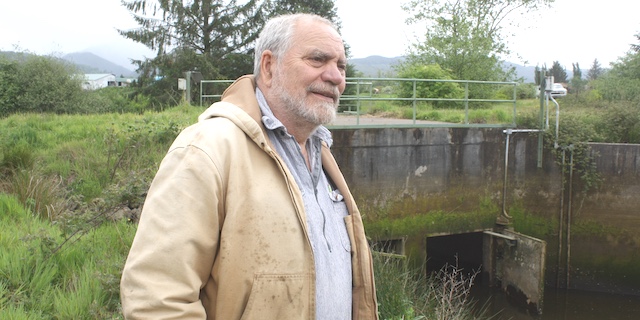Wages could increase under H-2A rule change
Published 11:30 am Tuesday, September 24, 2019

- A foreign farmworker picks apples in Orondo, Wash., last year before the coronavirus pandemic. Washington farmers have applied to fill a record number of jobs with H-2A workers.
The U.S. Department of Labor’s proposed rule changes for the H-2A-visa agricultural guestworker program will make estimating wages more difficult and expensive, the American Farm Bureau Federation says.
Minimum wages for H-2A workers would have been higher in most states in recent years if the proposal had been adopted, according to an analysis written by AFBF economist Veronica Nigh.
Among many other changes, the proposal would consider agricultural occupations in setting the minimum wage — known as the Adverse Effect Wage Rate or AEWR — within regions. That’s to address a concern that by currently combining field and livestock workers the AEWR may have an adverse effect on wages of workers in higher-paid positions such as farmworker supervisors and construction laborers on farms.
But because at least five different possible data sources are used for specific wages and thin data are available for many occupations, estimating wages will be “more difficult, more variable and more expensive,” Nigh concludes.
The AEWR is the DOL-set minimum wage for H-2A workers intended to prevent foreign guestworker wages from being too low and adversely affecting or depressing domestic wages.
However, DOL has violated law by failing to first determine there is an adverse effect to domestic wages before imposing an AEWR, says Michael Marsh, president and CEO of the National Council of Agricultural Employers.
DOL jumps that step, assumes there is an adverse effect and sets “arbitrary premium” AEWRs based on USDA wage surveys, he says.
The result is a perpetual upward, unsustainable wage spiral that jeopardizes U.S. farms and ranches, Marsh says.
AEWR increases averaging 6.3% nationally in 2019 and ranging up to 22.8% in Nevada, Utah and Colorado prompted a lawsuit by NCAE. It is still pending on appeal.
Marsh said Nigh is a good economist and has delved deeper into the proposal and data than he has.
“I don’t dispute what she says,” he said.
There are not enough agricultural workers in some job classifications, so DOL uses non-farm data, he said.
The DOL secretary needs to first determine there is an adverse effect even though the law doesn’t specify how, Marsh said. It may be difficult to show when employers have tried to recruit but can’t find domestic workers, he said.
If there is no adverse effect, then no AEWR should be imposed and the state or federal minimum wage or a state prevailing wage will apply, he said.
USDA wage surveys are flawed in that they recommend new AEWRs each year based on an average of minimum wages, piece rates and bonuses, Marsh said.
“So the worker who does just enough to get by and keep his job on minimum wage gets an increase each year based on bonuses for those working hard. That’s crazy,” he said.
Marsh said he’s concerned next year’s AEWR will again be artificially high, that he’s been told additional methods may be used to determine it but doesn’t know what they are.
“USDA, DOL and the White House have heard from a lot of farmers about the high AEWR this year,” he said. “It gives me a little hope things might get better but I’m not all that optimistic.”
Marsh said he applauds the Trump administration approving a new rule proposed last November requiring H-2A employers to advertise for domestic workers online instead of through print media.
“It finally brings the H-2A program into the digital age. It will save farmers tens of millions of dollars every year and will be more effective in finding domestic workers who want to work,” Marsh said. “Potential workers look for work on their smart phones instead of corner newsstands.”






